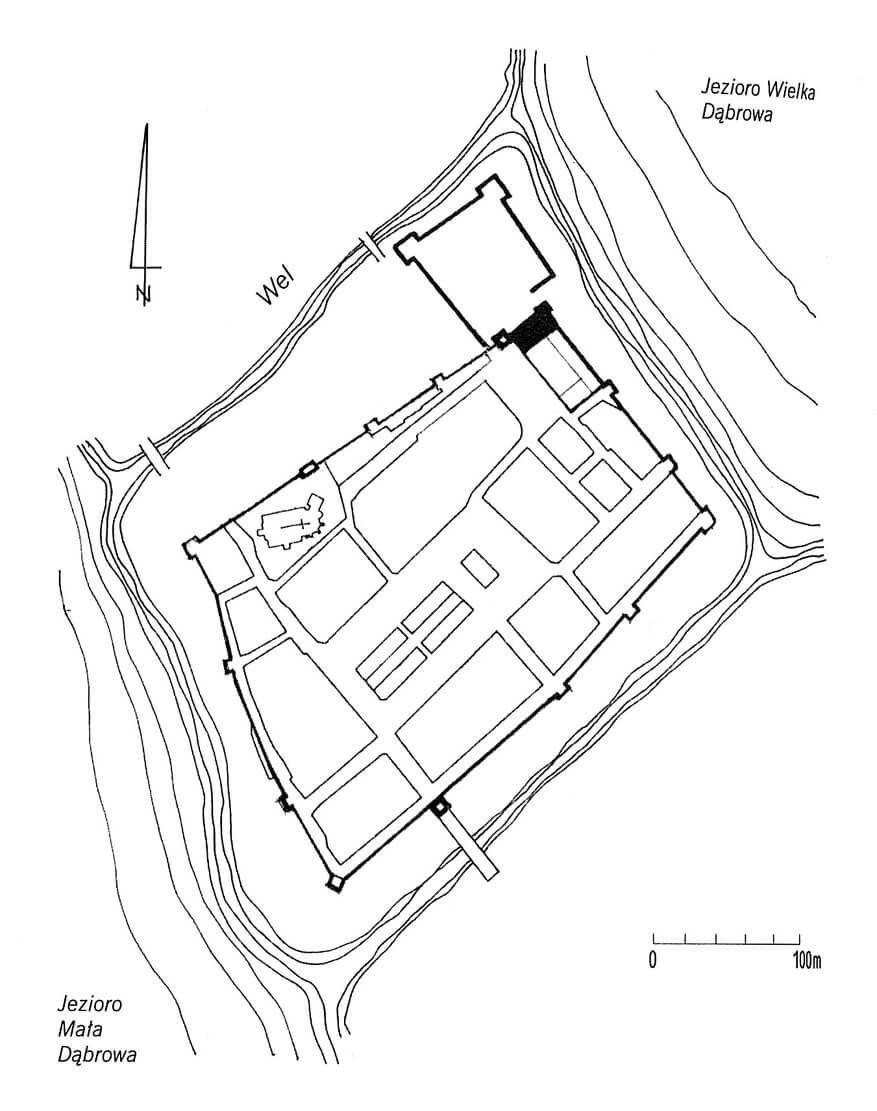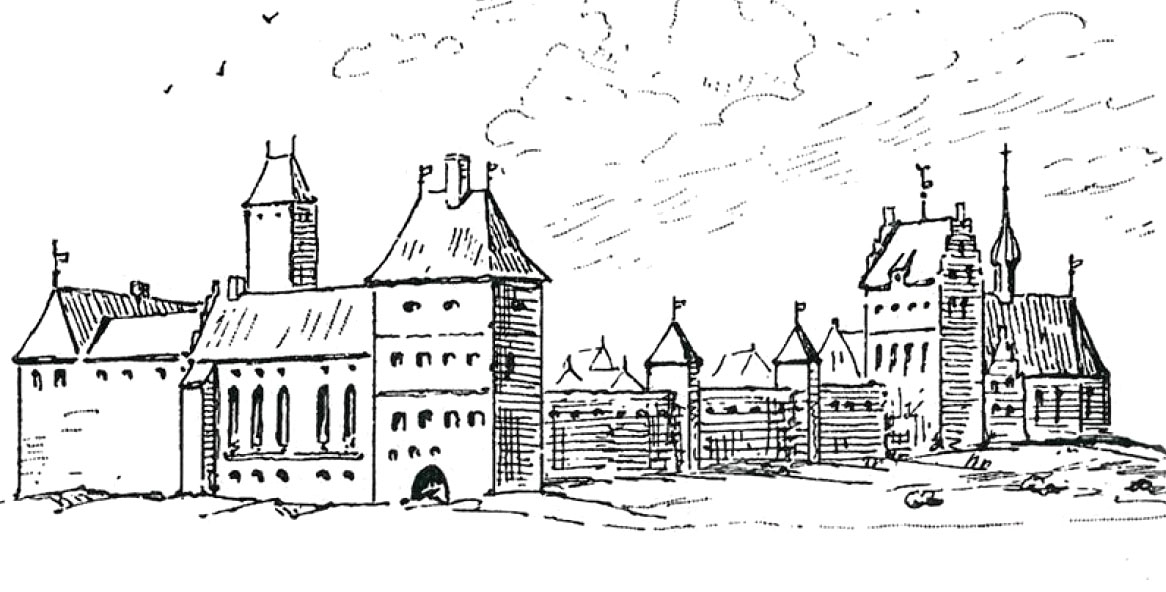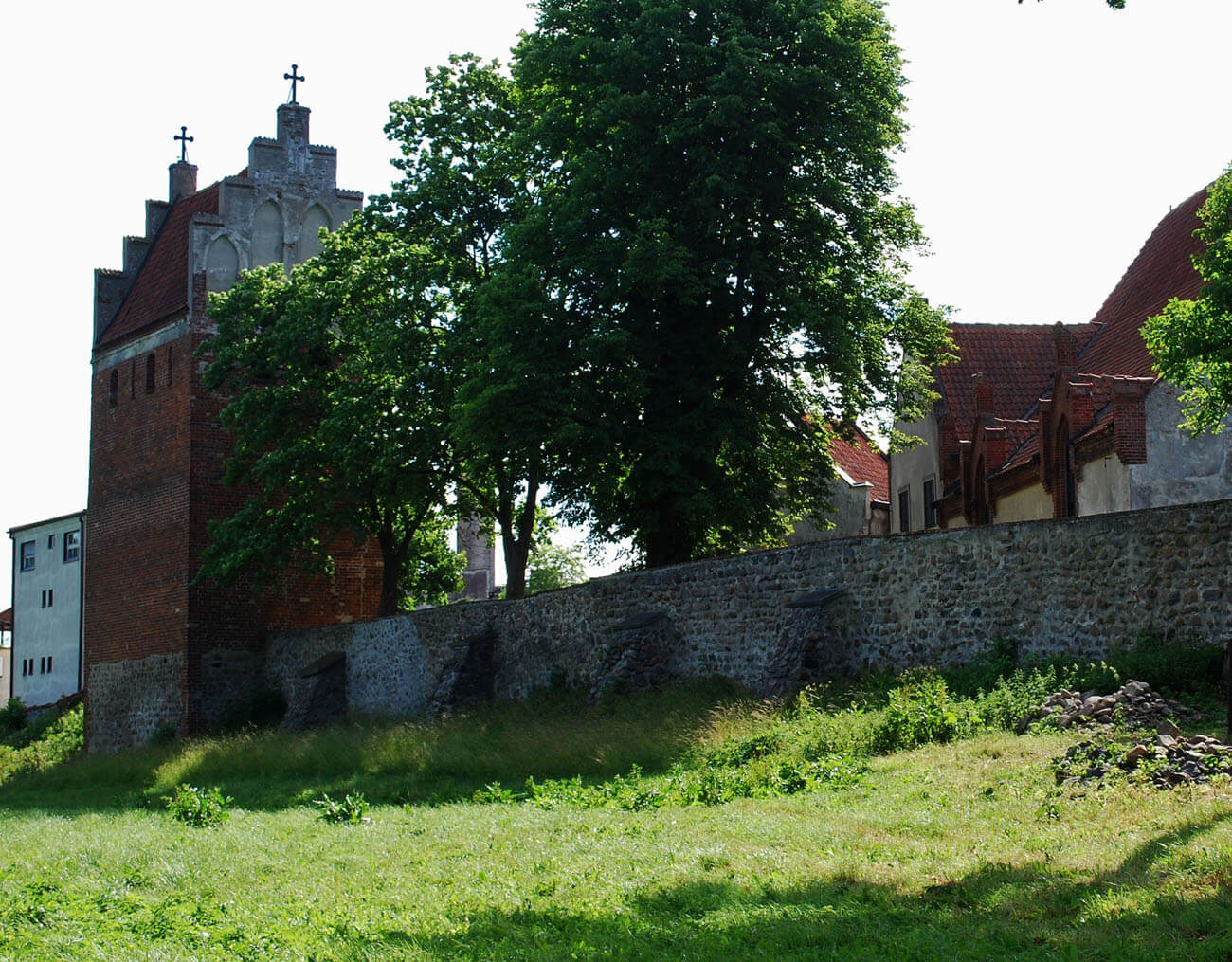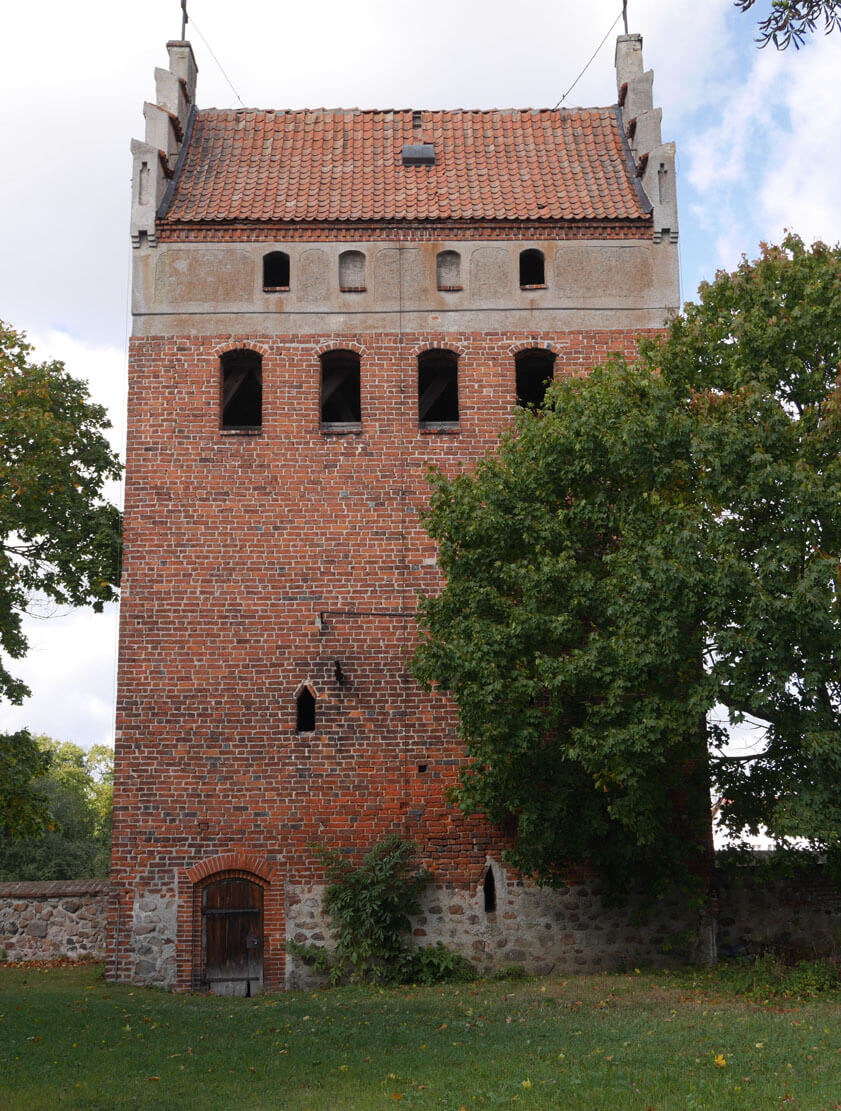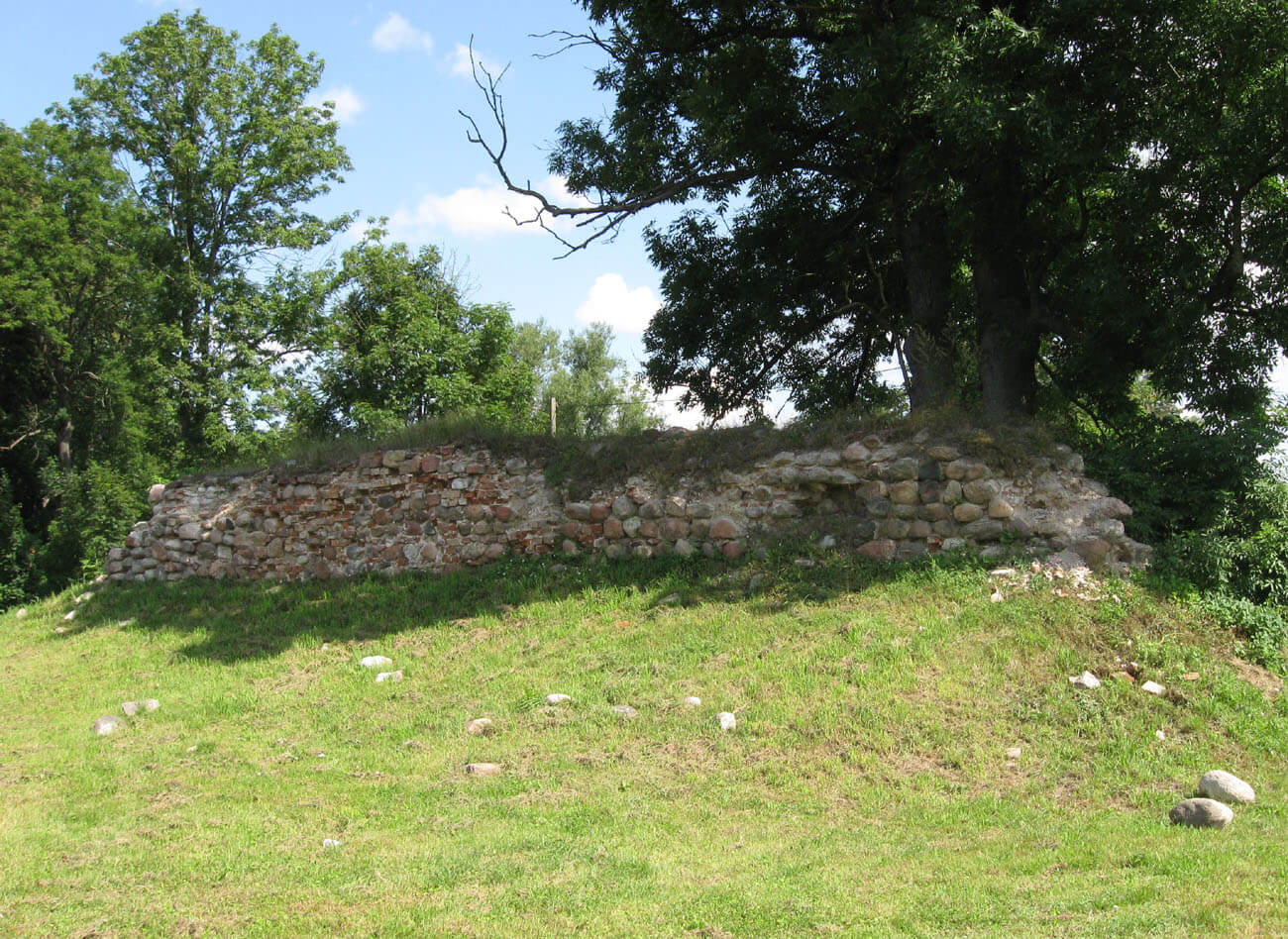History
Dąbrówno (Gilgenburg), was founded by the Teutonic Order in 1326 on the isthmus between two lakes, at the seat of the Teutonic pfleger, first recorded in 1316. The original name was Ilienburg and probably derived from the Prussian word ilgis, which meant “long”. Probably it referred to long lakes and a narrow strip of land between them, on which the settlement was located.
The rapid development of the town, located on the trade route between Mazovia and the Baltic Sea, resulted in the construction of defensive walls around the mid-fourteenth century and incorporation into the fortifications the old Teutonic stronghold. However, these fortifications did not protect the townspeople from the successful assault of Polish troops under the command of king Władysław Jagiełło in 1410. The castle and the town were captured, and then, to the warning of others, it were completely looted and destroyed.
After the end of the Polish-Teutonic war, the Teutonic Knights rebuilt the castle and town walls. As a result of the provisions of the Second Peace of Toruń in 1466, Dąbrówno remained at the Teutonic Order. Due to the difficult financial situation and the inability to pay wages, in 1475 the Order gave the castle and the town in a pledge to the knight Georg von Loeben, commander of the mercenary troops. After a few years, in 1488 Georg gave it to a Pole, Mikołaj Wilko, and then the town returned to the Order.
After the secularization of the Teutonic Order, the starosty was created in Dąbrówno. From the second half of the 17th century, this office was held by the Finckensteins, who in the years 1693-1696 rebuilt the castle into an early modern, comfortable residence. Around 1870, the gatehouse was demolished, at the beginning of the 20th century the building was already neglected, and the destruction of the town and the castle was brought by the Second World War. The castle was preserved as a ruin with high walls until the 1960s. Then it almost completely vanished.
Architecture
The town was founded on a narrow isthmus between the lakes: Dąbrowa Wielka and Dąbrowa Mała. It formed a quadrilateral in plan with the longer sides roughly on the east-west line, in such a way that the fortifications almost completely blocked the land, forcing the need to pass through the town, unless you wanted to avoid large lakes. They also acted as a moat, and after digging two ditches on the northern and southern sides of Dąbrówno, an irrigated moat was also obtained in the other directions.
The town wall was built of bricks in the monk bond on a plinth of erratic stones. Presumably, it was originally topped with a battlement and an open wall-walk, later replaced by a simple parapet pierced by arrowslits. The wall was also reinforced with four-sided half towers, opened from the inside and fully protruded by the face of adjacent curtains. They were placed quite regularly around the perimeter.
The Teutonic castle was erected in the northern corner of the town, right in front of the moat separating the isthmus. It was a simple complex on a square plan with dimensions of 25 x 25 meters. It consisted of a residential house with dimensions of 13.8 x 25.8 meters and a defensive wall forming a small courtyard. The building was erected of bricks in a Flemish bond, so it was probably later than the curtains of the town walls coupled with it. At least in one corner (northern), it had a half tower, opened from the inside, similar to those located in a small castle in Bezławki. The castle was connected with the town fortifications, and its gatehouse functioned quite atypically as a town gate, known as the Smith or the German Gate. It was adjacent to the main residential building.
The fortified outer bailey was located outside the town walls on the north-eastern side, on the very shore of the lake. On the southern side, the entrance to the town was provided by the Polish Gate. The parish church could also fulfill defensive functions, located near the town fortifications in the north-west part of Dąbrówno.
Current state
Dąbrówno town walls have been preserved on quite a long length, but only up to the height of the foundations. The best preserved element is the so-called Bell Tower. It owes its name to the rebuilding to the church belfry in the 17th century. Only relics of foundations has remained from the brick castle.
bibliography:
Czubiel L., Domagała T., Zabytkowe ośrodki miejskie Warmii i Mazur, Olsztyn 1969.
Die Bau- und Kunstdenkmäler der Provinz Ostpreußen, Die Bau- und Kunstdenkmäler des Oberland, red. A.Boetticher, Königsberg 1893.
Garniec M., Garniec-Jackiewicz M., Zamki państwa krzyżackiego w dawnych Prusach, Olsztyn 2006.
Herrmann C., Mittelalterliche Architektur im Preussenland, Petersberg 2007.
Leksykon zamków w Polsce, red. L.Kajzer, Warszawa 2003.


